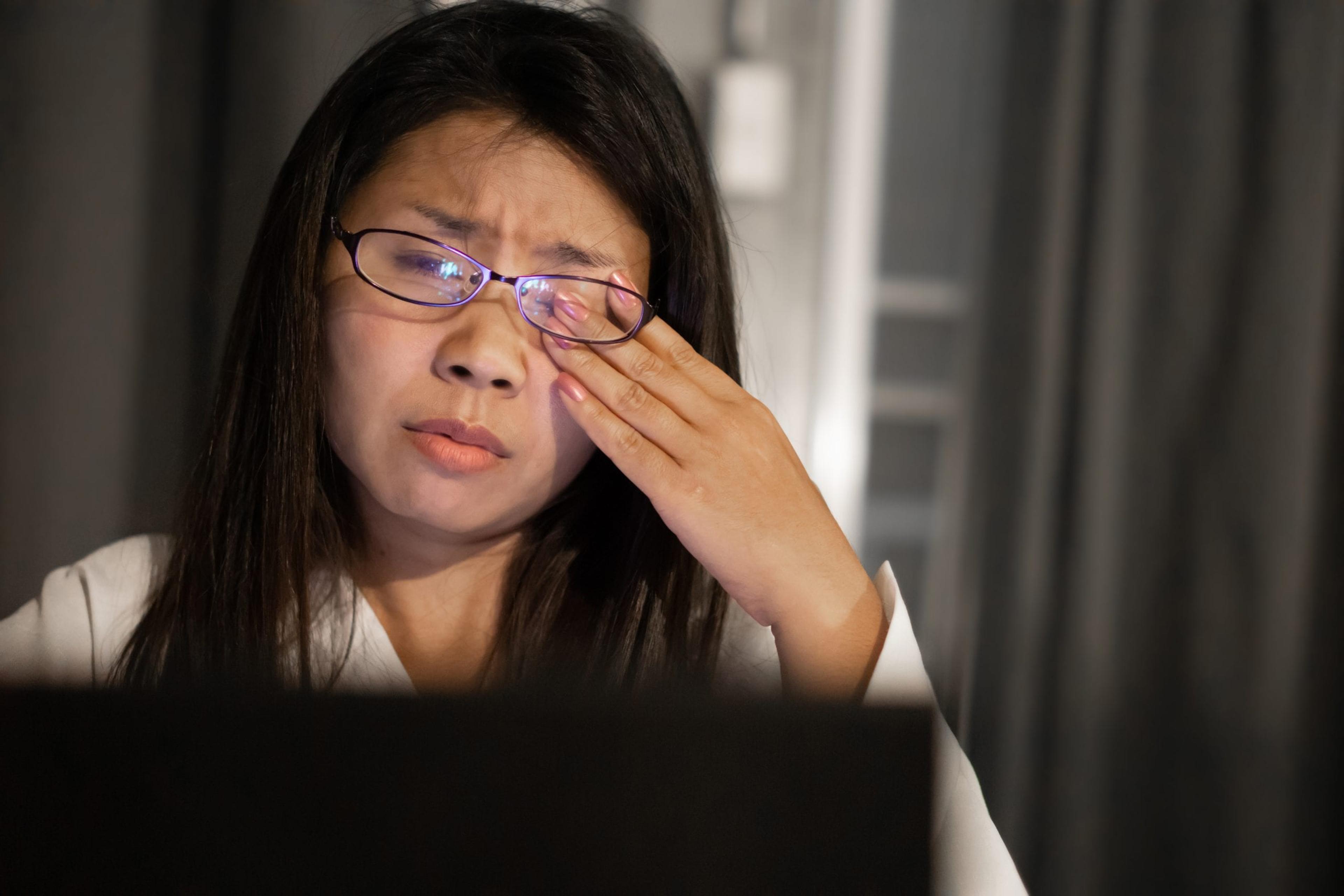The Real Impact of Blue Light on Your Eyes
Shandra Martinez
| 2 min read

In the last year, many of us have spent more time at home than usual, and as a result, our eyes have had much more exposure to digital screens. Whether it’s been more time scrolling through social media out of boredom or computers have become integral to our work, they’re reasons more of us are struggling with eye issues. On the latest episode of the A Healthier Michigan Podcast, hosted by Chuck Gaidica, he and Dr. Paul Kimbro, director of clinical services for Henry Ford OptimEyes, discuss the impact of blue light on our eyes.
What is blue light?
“Blue light is everywhere. It’s in our phones, It’s in tablets. It’s in our fluorescent light bulbs. And maybe most importantly, it’s in the sun,” said Dr. Kimbro. “That’s the biggest emitter of blue light that we encounter daily, but 2020 has really refocused the conversation on our screens.”
How harmful is blue light to our eyes?
While it may be too early to know for certain, studies suggest blue light damages the retina in the back of the eye. Some researchers are pointing to the unknown effects of cumulative exposure. If you are spending a lot of time in front of a screen and you’re feeling eye strain, dryness, burning, tearing, blurred vision, headaches, these are signs you might need to give your eyes a break. “I don’t think we can pin it strictly on blue light,” said Dr. Kimbro, adding, “I think we can attribute it to time we’re spending on devices, how little we’re blinking when we’re focused on these devices. So those sorts of things are probably important.” He recommends practicing the 20-20-20 rule, which means every 20 minutes, try to look 20 feet away for about 20 seconds. This allows the focusing system in the eye to reset, the tear film to renormalize and the blink rate to reestablish itself. “At the end of the day, if we’re able to do that, we’ll probably come away with a lot fewer of these digital eye strain symptoms,” said Dr. Kimbro. “Most eyecare providers are advocating for less screen time, more physical activity outside. And I think the evidence is growing to back up that recommendation.” Listen to the A Healthier Michigan podcast to hear the entire conversation. Related:
- How Vision is Tested in Young Children
- Fixes For the Most Common Vision Problems
- Eye Health and Safety 101
Photo credit: Getty





